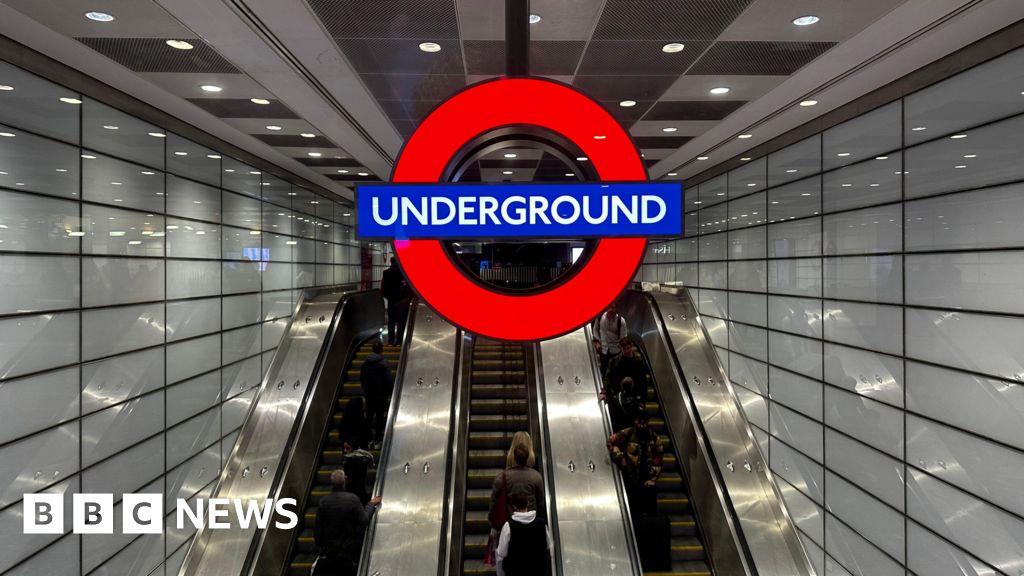Business
With two months to Christmas, here’s what retail leaders expect for holiday shopping

There’s just two months until Christmas Eve, and retailers are meeting a more cautious shopper with earlier offerings.
Most retailers won’t report third-quarter results or updated holiday expectations until just before Thanksgiving, largely considered the sector’s most important week of the year. By then, many shoppers will have already started checking off holiday shopping lists.
Amazon’s October Prime Day sales event and competitors’ ever-earlier Black Friday deals grab some portion of the holiday wallet share. The unofficial kickoff to the holiday shopping season comes as executives point to a bifurcation in consumer spending, with lower-income consumers feeling the strain on their budgets, and as a government shutdown and tariff costs threaten purchasing power.
Kohl’s is among the retailers chasing holiday shopping early with hopes of boosting the total haul.
“We want to make sure we’re driving that early consideration knowing that they’re shopping early,” Kohl’s Chief Marketing Officer Christie Raymond said at a media event earlier this month.
The off-mall department store is starting its holiday marketing campaign next week, a week earlier than last year, when it waited until after the election. In the coming days it will be breaking out the rest of the holiday merchandise not already set out in stores.
A key part of Kohl’s holiday strategy is to capture shoppers not only early, but often.
Raymond said during the last holiday season, between November and January, shoppers made “15 plus trips” on average to stores across the industry, but checked out with smaller baskets. Those findings were based on a survey that Kohl’s conducted with a third-party research firm.
“[Consumers are] doing the work to get what they want at the price they want to pay,” she said.
While Academy Sports and Outdoors CEO Steve Lawrence agreed that shoppers are savvy when it comes to price monitoring, he said he expects customers “to aggregate their spending around those key shopping moments on the calendar where they know they can get the best deals.”
Both Kohl’s and Academy Sports cater largely to a middle-income shopper. Still, Lawrence said consumers are paying close attention to discount events.
“If we run the same promotion this year that we ran last year, there’s higher take rate on it,” he said. “I think that’s a sign customers are really savvy, and they’re figuring out when it’s the right time to shop.”
Shifting shopping habits
Lawrence said that while promotions are part of every holiday season’s playbook, Academy Sports will be tweaking how it runs discounts this year in light of higher engagement with the deals.
“If last year we ran a promotion for 10 days, maybe I only run it for 4 days over the Thanksgiving weekend,” he said. “Maybe instead of having a whole brand promoted, maybe it’s only the key categories within that brand, right? Or maybe in some cases, it might be promoting at a slightly lower discount.”
Raymond said Kohl’s is seeing shoppers reaching for lower-price options and expects that to continue during the holiday season.
“Customers maybe were purchasing a premium brand, but we are seeing them trading down to private brands,” she said. “We think we’re in actually a great position to capitalize on that.”
A private brand is one made for and sold by only one retailer, allowing for more control over design and, importantly, cost. That can mean lower prices for shoppers and higher margins for the retailer than a national brand.
Shoppers carry Macy’s and Nordstrom bags at Broadway Plaza in Walnut Creek, California, US, on Monday, Dec. 16, 2024. The Bureau of Economic Analysis is scheduled to release personal spending figures on December 20.
David Paul Morris | Bloomberg | Getty Images
While Kohl’s doesn’t disclose the proportion of its sales that are private label, Chief Merchandising Officer Nick Jones said it’s not as high as it used to be, adding there’s opportunity to boost that share this holiday season, particularly for shoppers trying to stretch their wallets.
About 23% of Academy Sports business is private label, the company has said.
“In a lot of cases, [our private label] is our best expression of value,” Lawrence said. “Our goal is to be at or better than the best price on a given day.”
However, Lawrence said, innovation has to continue to inspire sales.
‘Cautiously optimistic’
The retail industry has repeatedly described its customer in recent quarters as “choiceful,” to indicate thoughtful spending, but also “resilient.” Executives continue to use those descriptors, or synonyms for them, for the upcoming holiday season.
“I think certainly with inflation in certain categories, it’s put some pressure on spending power,” Lawrence said. “But you know, what we’ve also seen is customers are very resilient. They do come out during the key shopping time periods. They came out for Mother’s Day, Father’s Day, back-to-school. We expect they’re going to come out again for holiday.”
Dick’s Sporting Goods Executive Chairman Ed Stack told CNBC this week he thought the consumer was “a little bit stressed” this season, but that he’s “cautiously optimistic.”
“If you’re going to provide value to the consumer, and they can see that, feel that value — and I’m not talking about from a price standpoint, could be innovation … then they are going to come and they are going to buy,” Stack said.
Executives for all three retailers agree inventory positions for holiday will be normal, despite tariff uncertainty that many feared would affect order volumes. None of the three were expecting merchandise shortages.
“I don’t think [inventory availability] is going to be any different than it has been in the past,” Stack said. “That really super hot item that everybody wants? That’s probably going to be in short supply, like it is every year.”
Business
London Underground fares to go up by 5.8% in 2026

The cost of travelling on the London Underground, the Overground and the Elizabeth line is set to rise by 5.8% next year, the mayor of London has confirmed.
The increase is 1% above the rate of inflation and will come into force in March.
The freeze in national rail fares announced last month will not apply to Transport for London services.
Sir Sadiq Khan says he proposes to freeze the price of Travelcards until March 2027 which means the weekly and daily caps will not change, and fares on London buses and trams will not rise.
The mayor said a rise – equivalent to one percentage point above the RPI rate of inflation – was a condition of the £2.2bn capital funding deal that TfL agreed with central government in the spending review in June.
He said the freeze on bus and tram fares until July 2026 was “an emergency cost-of-living measure” funded by City Hall.
Sir Sadiq added: “This is the seventh time I’ve been able to freeze bus and tram fares, and it will particularly benefit those on the lowest incomes in our city.
“The plans would mean that only fares on Tube and TfL rail services would now increase from March 2026.
“I also plan to ensure that increases to pay-as-you-go fares on the Tube will be capped at 20p, with many only rising by just 10p.”
City Hall Conservatives criticised the announcement.
In a statement, they said: “Whilst the rest of the country enjoys a fare freeze, Sadiq Khan has burdened Londoners with cost increases that are disproportionately going to affect the young professionals that are the backbone of our city’s economy, as well the other millions of passengers who use these services.”
The Liberal Democrats said the mayor had “failed to make this case to his ‘mates’ in government like he promised he would, he’s now expecting working Londoners to stump up the costs instead”.
The fare rises will apply to all TfL-run rail services, including the Docklands Light Railway.
The mayor said the increase would mean an off-peak pay-as-you-go Tube fare from Tottenham Court Road in Zone 1 to Edgware in Zone 5 would rise from £3.60 to £3.80.
Pay-as-you-go fares on Tube and TfL rail services within Zone 1 only will rise from £2.90 to £3.10 in the peak, and from £2.80 to £3.00 during off-peak and weekends.
A peak-time journey from Upminster in Zone 6 to Cannon Street in Zone 1 will increase from £5.80 to £5.90.
The government capital funding deal is expected to help to replace aging fleets, upgrade signalling technology and improve buses.
The fare rises will be subject to a final decision by the mayor.
Business
EPFO Offers Low-Penalty Route For Employers To Enrol Left-Out Employees, Check How To Do It

Last Updated:
EPFO launches a six-month window for employers to declare left-out employees under Employees Enrolment Scheme 2025.

Under existing rules, all employees earning up to Rs 15,000 in basic pay must be enrolled in EPFO schemes.
The Employee Provident Fund Organisation (EPFO) has announced a six-month window for employers to declare left-out employees between July 01, 2017 and October 31, 2025. It will help them to regularise past compliance. It has the option to avail benefits under the Employees’ Enrolment Scheme 2025. The special six-month window is open between November 01, 2025 and April 30, 2026.
The regulator is offering several benefits to employers for declaring left-out employees under the scheme. One of the key benefits is a nominal penalty of Rs 100 per establishment for declaring left-out employees. Moreover, there will be no suo moto action during the scheme period against employers.
There is a provision to waive the employee share if not deducted.
All establishments, whether already covered or not covered under the
EPF & MP Act, 1952, are eligible to participate in the Employees’
Enrolment Campaign, 2025.
The objective of the EEC–2025 is to:
a. Facilitate voluntary compliance by employers in enrolling all eligible
employees left out of EPF coverage;
b. Enable employers to regularize past defaults with minimal penal
consequences; and
c. Broaden the social security coverage under the EPF & MP Act, 1952.
How Can They Declare?
Declarations can be filed online only through the EPFO Portal.
Employers will generate a Face Authentication–based UAN for
each declared employee using the UMANG App.
Contributions will be remitted using Electronic Challan-cum-Return
(ECR) linked to a Temporary Return Reference Number (TRRN)
generated during the declaration process.
December 11, 2025, 18:31 IST
Read More
Business
FirstGroup snaps up sightseeing bus operator for £17 million

Transport giant FirstGroup has expanded into sightseeing buses after snapping up an operator in London and Bath.
The FTSE 250 company told shareholders it has acquired the UK sightseeing operations of French firm RATP Developpement SA for about £17 million.
It said the deal will help to grow and diversify its operations across key markets.
The acquired business runs under the Tootbus brand and runs 63 buses, 42 in London and 21 in Bath.
The Tootbus business also includes a large freehold depot in Wandsworth, southwest London, and a leased depot in Keynsham, Bath.
It said the London depot will help the group manage its operations in the capital and allow it to bid for additional Transport for London red bus route contracts.
The business, which also runs the Airdecker service from Bath to Bristol airport, employs about 190 people across its operations.
Tootbus’s UK operations reported revenues of £15.9 million in 2023 and delivered a roughly £600,000 operating loss for the year, the company said.
Graham Sutherland, FirstGroup chief executive, said: “The acquisition of the bus operations in London and Bath, in line with our UK-focused growth and diversification strategy, will allow us to further diversify and expand our footprint in two of our key markets.
“The integration of the businesses will also create material operational and cost synergies and the opportunity to grow our London route portfolio over time.”
Shares in FirstGroup were 1.5% higher on Thursday.
-

 Business1 week ago
Business1 week agoCredit Card Spends Ease In October As Point‑Of‑Sale Transactions Grow 22%
-

 Politics5 days ago
Politics5 days ago17 found dead in migrant vessel off Crete: coastguard
-

 Business1 week ago
Business1 week agoAsian stocks today: Markets trade mixed ahead of US economic data; HSI nears 1% loss; Nikkei adds over 800 points – The Times of India
-
Uncategorized1 week ago
[CinePlex360] Your site has updated to WordPres
-

 Sports6 days ago
Sports6 days agoAustralia take control of second Ashes Test | The Express Tribune
-

 Tech1 week ago
Tech1 week agoNew control system teaches soft robots the art of staying safe
-

 Fashion1 week ago
Fashion1 week agoBangladesh’s economic outlook cautiously optimistic: Govt
-

 Fashion3 days ago
Fashion3 days agoGermany’s LuxExperience appoints Francis Belin as new CEO of Mytheresa
















